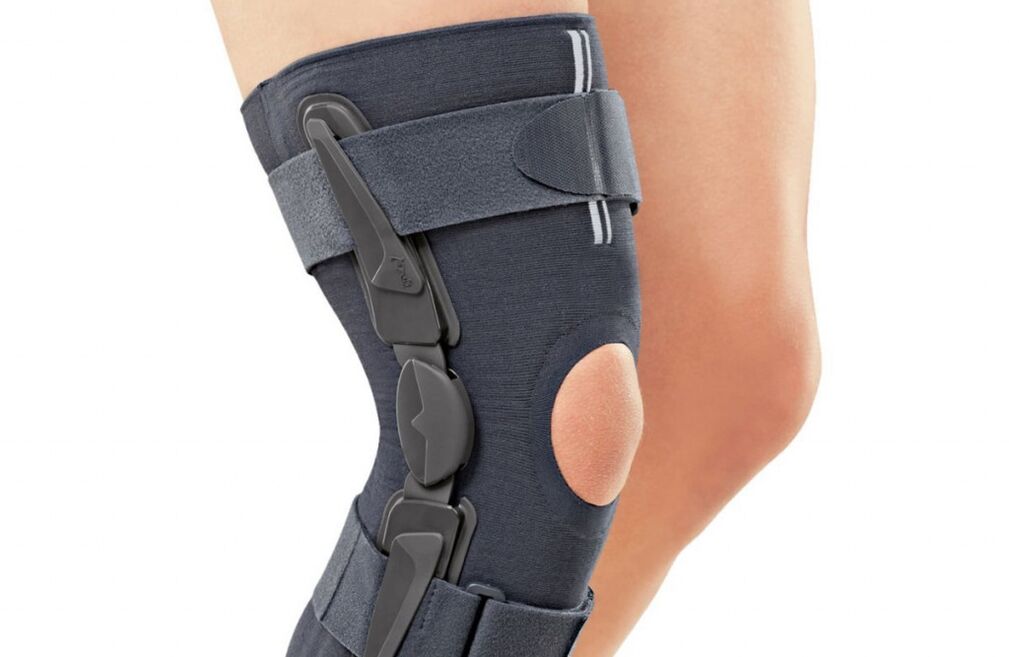
The good condition of the knee joint is important for normal movement. In the case of problems, illnesses or injuries to the joint and musculoskeletal system, every step is associated with severe, sometimes unbearable pain in the knee. For the treatment of the knee joint, medication and the use of physiotherapy are prescribed. Care must be taken to protect it from external influences. For this, a knee orthosis was invented to fix the knee joint. Such devices are made of different materials, have different degrees of protection and have a wide range of applications.
Indications for the use of a knee brace

Such fixation devices are used not only to protect the affected joint, but also to reduce the load on it, as well as normalize its functioning after injuries and operations. Knee pads can be used both for therapy (e. g. for arthrosis) and for the prevention of various diseases. However, you can wear the device only after the appointment of the attending physician, otherwise there will be a violation of the blood supply to the joint and aggravate the problem.
Wearing a knee brace is indicated both for the treatment and for the prevention of various pathologies. They are often recommended to athletes to prevent injuries. The device for fixation is prescribed for therapy:
- osteoarthritis and arthritis;
- dislocations and subluxations;
- pathologies of a rheumatic nature;
- sprains;
- Injuries and resulting joint instability.
Often the use of a fixative is prescribed in the rehabilitation period after complex injuries or operations.
Wearing an orthosis is recommended for:
- Relief of the damaged knee joint. The device is recommended for people suffering from joint diseases, when each step is accompanied by unbearable painful sensations that significantly slow down recovery.
- Prevention of diseases and injuries. The use of knee pads and bandages in sports is strongly recommended for athletes and people working in the field of trade and construction. Overweight people need to wear a special elastic knee brace;
- Fixation of the injured knee joint. In this case, the use of a compression bandage is prescribed to prevent further damage to the knee or meniscus and reduce severe pain and swelling. In this case, the fixation device is a kind of additional stabilizer for the joint;
- movement restrictions. For this, the use of a rigid bandage is prescribed, which completely excludes any movements.
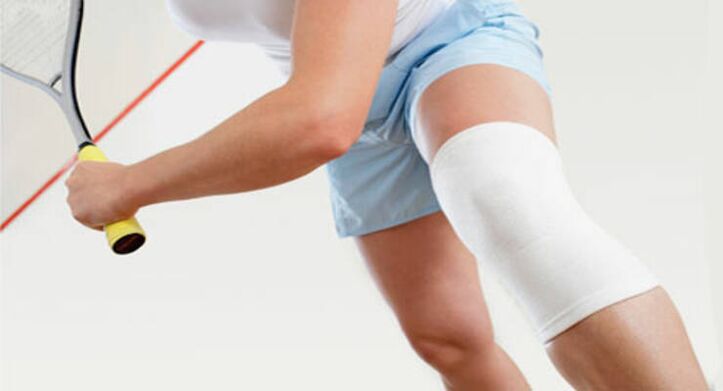
Knee pads help:
- Accelerating the healing process.
- Prevent meniscus and knee injuries.
- Strengthening of the damaged joint.
- Keep the patient moving.
- reduce pain.
- Improvement of lymph drainage and blood circulation.
- elimination of swelling.
- Minimizing inflammatory processes in the joint.
- load reduction.
- Facilitate knee movement.
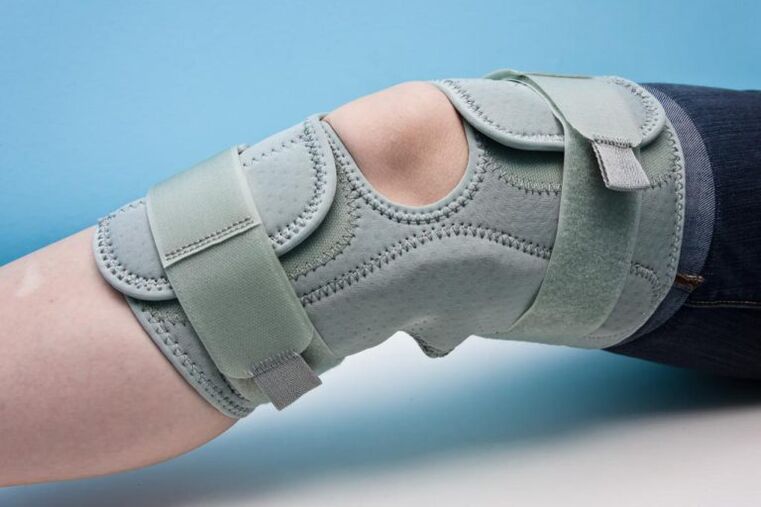
In addition, orthopedic fixators are an excellent alternative to impractical plaster casts.
What materials are braces made of?
A significant amount of materials are used in the manufacture of orthoses. The most popular are:
- dog fur. It is used to make knee pads with a warming effect.
- Cotton. It is used to add strength and elasticity to the clamps.
- Lycra, elastane, polyurethane - synthetic elastic fabrics with high breathability.
- neoprene. Elastic material that contributes to excellent fixation of the knee joint. These knee pads are easy to care for. They also have a warming effect.

Devices for fixing the knee: varieties
There are a considerable number of models and types of this orthopedic device. They differ in the material from which they are made. The knee brace can be open or closed, flexible or rigid. In addition, knee pads for the knee joint can be equipped with hinges, metal inserts, magnetic plates, silicone rings and even an infrared heating source.
Depending on the purpose of the product for fixation, they are presented in the following variations.
- bandage. Elastic corset that helps to fix, warm and reduce the load on the knee zone.
- orthosis. It has similarities to a bandage but is more functional.
- caliper. It is used for preventive purposes, helping to preserve the knee joint and prevent damage.
- Fasten. Rigid knee brace used in most cases in the rehabilitation period. Assign such kneecaps for osteoarthritis.
- Tutor. A device in the form of a metal hoop with a rigid attachment. Assign it after surgery or injury. Soft materials are mainly used for the manufacture of such knee pads. This device is hypoallergenic.
- Elastic knee pad. Many well-known devices, convenient and easy to use.
- Tape. Elastic tape. The task of the tape is to relieve the muscles and ligaments.
About knee orthosis in detail
The bandage on the knee joint is used for easy fixation of the knee. The knee pad helps to minimize the load, but at the same time such devices do not impede movement. For the manufacture of fixatives, cotton, synthetics and knitwear are used.
An orthosis is somewhat similar to a bandage. The main difference is the presence of additional elements in the first. Such products are functional and help to fix the knee joint depending on the occasion. They can be equipped with rigid ribs and inserts, silicone rings, side hinges. You can fix the knee bandage with Velcro.
The splint is a special splint, the main purpose of which is moderate or hard fixation. The device is much more convenient and practical than a plaster splint. In addition, when using a splint instead of a cast, the time it takes for knee function to recover is significantly reduced.
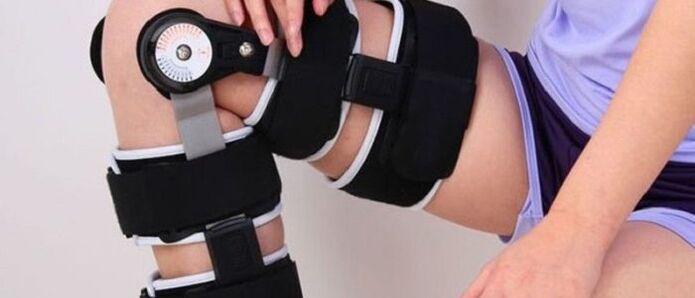
As for the brace, the main purpose of such a knee brace is to completely immobilize the knee. The knee brace is equipped with hinges that allow the patient to move without stressing the knee, as well as stiffeners covered with neoprene that help to make the necessary movements without injuring the meniscus. Such devices are worn to fix the joint in conditions such as osteoarthritis and gonarthrosis, as well as meniscus tears.
The calipers are designed for people who actively play sports and lead an active lifestyle. The caliper helps to avoid the risk of various injuries, protects and fixes not only the joint, but also the lateral muscles and ligaments, the kneecap and the meniscus.
The elastic bandage was held in high esteem before the advent of modern fixation devices. It has been used during sports to prevent injury and minimize pain.
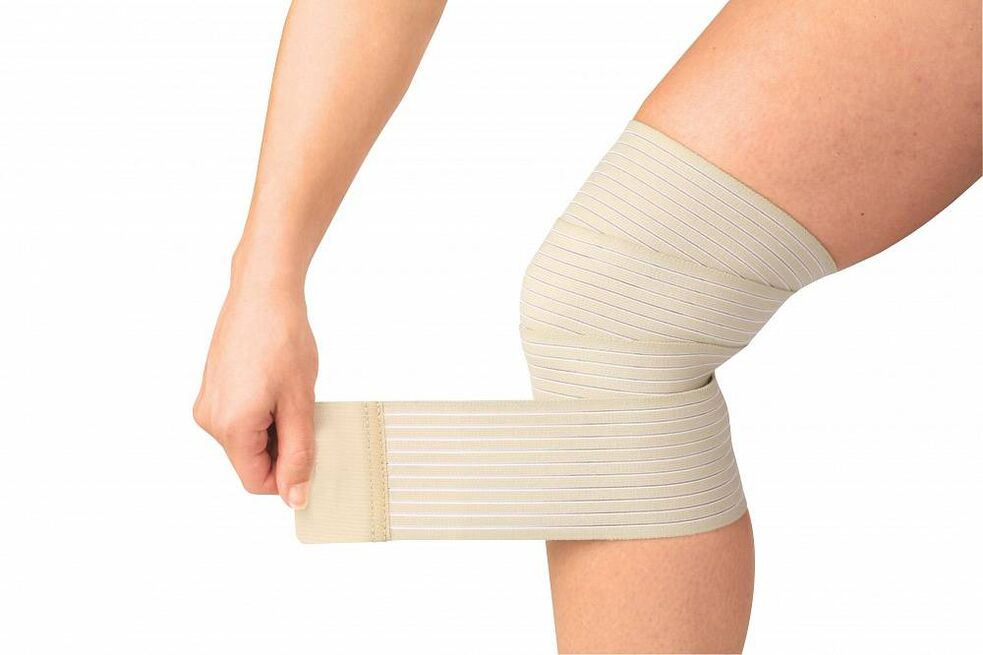
Tape is a unique bandage equipped with a special adhesive surface. With the correct use of the product, the joint is not pinched and movements are not restricted, but on the contrary, a micro-massage of the skin is performed. For the manufacture of such brackets, cotton is mainly used. This product helps minimize pain in the affected joint, swelling, and bruising.
Recommendations for choosing a knee brace
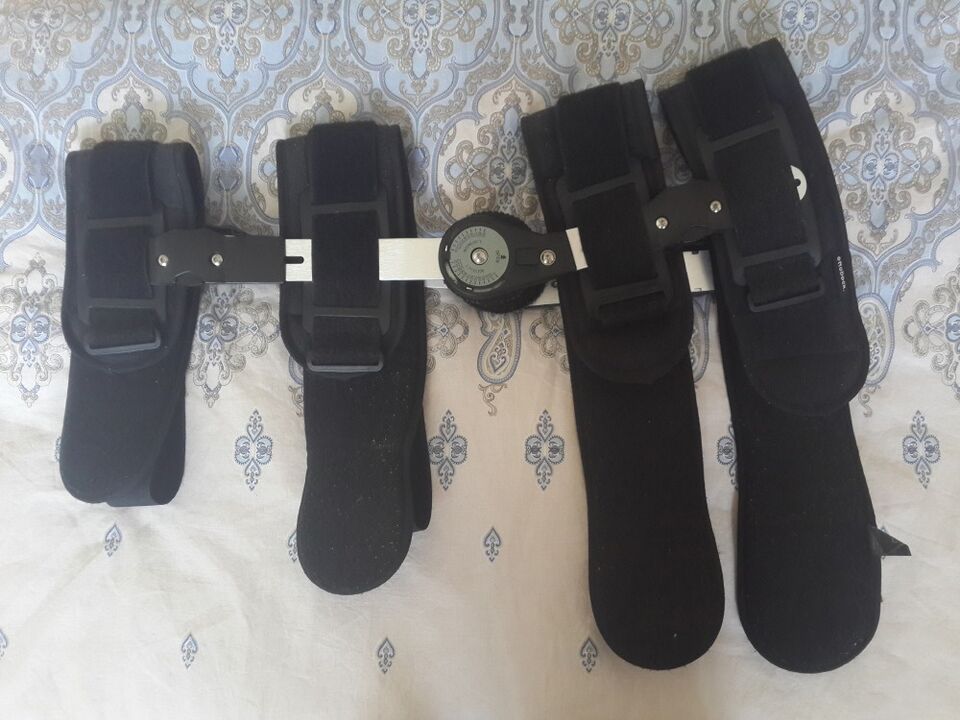
An orthosis for the knee joint is only selected by a qualified specialist and depending on the purpose. The knee pad must correspond to the individual parameters of the knee. In no case is it worth choosing a device yourself, especially if there are pain complaints. An incorrectly selected knee orthosis can be harmful. Ideally, the knee pad should fit the knee, fix the joint, but not squeeze it. In case the product is large, it will slide and therefore will not perform its functions.
You need to buy a bandage only in a specialty store. Orthotic prices vary depending on the manufacturer, model, and functionality of the device.
As for size, here's how to determine yours: Measure your leg just above the knee (about six inches). If the hip circumference is 44 cm, then your size is S, 44-54 cm - M, 54-60 cm - L, 60-67 cm - XL, 67 and more - XXL.
In order not to get confused with the size, be sure to measure the product before buying.
How to care for your knee orthosis
In order for the orthopedic knee bandage to serve you for a long time and not lose its therapeutic and preventive properties, you need to take care of it and follow the rules of operation prescribed by the instructions.
- Do not wash the bandage in the washing machine.
- Do not iron the bar.
- Do not hang the product to dry. Put it on a flat surface. In this way you prevent deformation and stretching of the orthosis.
- Do not use additional chemicals when washing.
You can only use the bandage as directed by a doctor. If you play sports and decide to pay attention to the condition of the joints during training, it is advisable to buy an orthosis in the presence of a trainer. Do not wear a knee brace for more than three hours a day. Wear it only at the time of sports or exercise therapy.





































